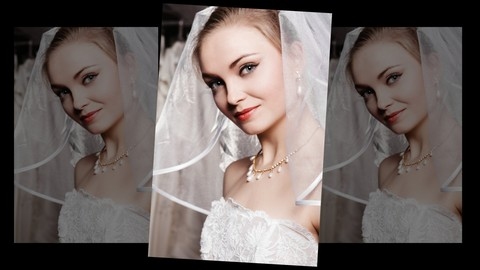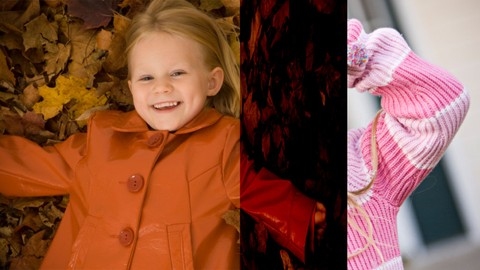ProShow is a powerful multimedia software that allows you to create stunning photo and video slideshows, perfect for capturing special moments, showcasing your work, or engaging your audience.
However, mastering its features can feel like a daunting task.
You’re looking for a course that’s comprehensive, engaging, and taught by an experienced professional who can guide you through the intricacies of this software.
Navigating the vast landscape of Udemy courses to find the right one for your needs can be a challenge.
There are so many options, it’s hard to know where to start!
Don’t worry, we’ve done the research for you.
For the best ProShow course overall on Udemy, we recommend Learn ProShow Producer - Beginning is Easy!.
This course is an excellent starting point for beginners, offering a clear and engaging approach to the software’s core features.
You’ll learn to add photos and videos to your slides, time them perfectly, customize styles, work with music, and add impactful transitions.
The course even covers advanced features like templates and grids, making it a comprehensive introduction to ProShow Producer.
While Learn ProShow Producer - Beginning is Easy! stands out as a great option, there are many other excellent ProShow courses available on Udemy.
Keep reading to explore our full list of recommendations and find the perfect course for your individual learning style and goals.
Learn ProShow Producer - Beginning is Easy!
You’ll start with an interface tour to get familiar with the software’s layout and features.
Then, you’ll learn how to add photos to your slides and time them perfectly, whether you want one, two, or three photos per slide.
Customizing slide styles is also covered, so you can make your shows truly unique.
Working with music is a breeze, too.
You’ll learn how to add songs from the built-in music library or use your own tracks.
The course even shows you how to edit music directly in the timeline for precise control.
Transitions are key to making your slideshows flow smoothly, and you’ll get plenty of guidance on choosing and applying them effectively.
Once your show is complete, you’ll learn how to publish it for sharing or burning to DVD using the built-in wizard.
This course doesn’t just cover the basics, either.
You’ll also explore advanced features like templates, grids and safe zones, and even get a coupon code for a popular wedding template.
There’s even a bonus lecture with additional tips, freebies, and discounts.
Mastering ProShow Effects
You will learn how to take control and create dynamic motion effects using keyframing.
The course starts with an introduction to motion keyframing, covering aspects like creating the 2 image flip effect and the “lemons to lemonade” concepts.
You will then dive into adding elements like dinner and dessert slides, learning techniques like adding time without affecting existing keyframes, setting attributes globally, and working backwards.
The course also covers rotating objects in sequence and provides a practice activity focused on motion effects.
Next, you’ll explore adjustment effects, including the differences between the Adjustments tab and adjustments in the Effects tab.
You’ll learn how to make global changes, edit tools that cannot be keyframed (except for Colorize), and create changes over time.
Specific effects covered include black and white to color, the “drawing” look, photo flash, tilted reflection, and using adjustment layers.
The course then moves on to text layers and captions.
You’ll learn how to create two captions that transform “on the fly,” use solid colors to hide captions, and create simple lower thirds.
Additionally, you’ll work on a family photo and caption montage, use text layers under and as masks, and create title effects like “Live, Laugh, Love.”
A practice activity focused on title effects is also included.
Masking effects are another key topic, covering the phone swipe effect, parallax effect, and a practice activity on masking behind a frame.
As a bonus, you’ll learn about modifiers, rotation centers, and creating a realistic drop shadow and swinging text layer using modifiers.
Learn Simple to Complex Masking in ProShow Producer
You’ll start with the basics of transparency and grayscale masks, learning how to create shapes like rectangles, squares, diamonds, and circles directly within the software.
You’ll also discover how to import unique shapes, such as hearts and paint splatters, to use as masks.
As you progress, you’ll dive into more advanced techniques like creating subtle effects with gradient masks and animating your masks for dynamic visuals.
The course covers using text layers with masks and as masks themselves, as well as creating transitions that incorporate masking layers.
You’ll explore the world of video masking, learning how to use video files as masks and mask layers.
The course even touches on specialty masking techniques, such as masking to create transitions and using text layers with masks for unique effects like reflections.
Throughout the lessons, you’ll work with various file types that preserve transparency, like PSD, PNG, and GIF, while understanding the limitations of formats like JPEG.
You’ll also learn about grayscale masks and their applications.
The course takes you on a journey through shape masking, starting with basic rectangles and squares, and progressing to more complex shapes like diamonds and circles.
You’ll even learn tricks like creating circles from squares by adjusting resolution values.
Motion masking is a key focus, with lessons on creating dynamic effects like double line swaps, magnifying glasses, and triple circle tilts.
The course also covers collage masks, perfect for creating vacation title sequences or other collage-style projects.
In addition to the masking techniques, the course includes a bonus lecture on styles, transitions, and other goodies, providing you with a comprehensive set of tools and resources to elevate your ProShow Producer projects.
What’s new in ProShow Producer 9
The course covers a wide range of exciting new features in ProShow Producer 9.
You’ll start by learning about Layer Filters, which allow you to apply various effects to your images and videos.
The Browse option makes it easier to find the perfect filter for your project.
Some popular filters include Nostalgia, HDR Vibrant, 8mm film, Airbrushed, Sepia, and different black-and-white styles with frames.
Next, you’ll dive into Motion Filters, which add dynamic movement to your creations.
The Follow Filter lets you track specific objects or areas, while the Follow Position Filter enables advanced techniques like wall pans, clothesline effects, and circular masks.
You’ll also explore zoom, tilt, and rotation options with Motion Filters.
Additionally, the course covers other useful updates like Vignette Presets, a Color Variation drop-down menu, font defaults for individual shows, improved publish options with navigation and queuing, and a publish history feature.
With these tools, you can take your ProShow projects to new creative heights.
Throughout the course, you’ll learn practical techniques for incorporating these features into your workflow, ensuring you can make the most of ProShow Producer 9’s powerful capabilities.
ProShow - How to Make a Good Show Great!
In this course you will learn techniques for selecting and enhancing photos, working with videos and music, customizing templates and styles, creating beautiful menus, and publishing your shows.
The photo section covers important tips like checking resolution, choosing in-focus shots with visible faces, using a reasonable number of photos, and avoiding too many from the same day.
You’ll even learn how to remove red-eye and fix dark or discolored photos using examples from photographers like Ryan Harvey, lemonjenny, Liz Henry, and Sebastian Dooris.
For videos, you’ll discover how to add backgrounds, trim audio, layer photos, and create picture-in-picture effects with captions.
The music lessons guide you through choosing copyright-friendly tracks, editing audio levels, and adding fade ins/outs.
Customizing your shows is a major focus, with multiple lessons on adjusting slide styles like orientation, timing, graphics, backgrounds, text, and colors.
You’ll master using transitions effectively and learn to install and tweak templates.
The menu creation modules teach you to design sleek, user-friendly navigation for both single and multi-page shows.
Publishing options for sharing your final product are also covered.
Create Styles, Transitions and Templates in ProShow Producer
You will start by exploring creative inspiration and learning how to use “for commercial use” artwork legally.
Then, you’ll dive into creating a stunning winter style in Photoshop, complete with a background and snowflake elements.
The course guides you through the process of saving your style in ProShow Producer, including labeling layers, designating replaceable layers, and adding helpful notes.
You’ll also learn how to create an attractive thumbnail, name and categorize your style, and ensure compatibility with ProShow Gold.
Transitions are a key focus area, and you’ll learn a step-by-step checklist for creating a spin and blur transition.
The course also covers creating a hot air balloon cover transition and a folding transition.
You’ll have the opportunity to practice creating your own custom transition.
Templates are another important topic covered in the course.
You’ll learn how to create a template from an existing show, as well as how to work with linked layers and matching layers.
A practice activity will reinforce your understanding of linking and matching layers.
Throughout the course, you’ll gain hands-on experience with essential tools like Photoshop and ProShow Producer.
You’ll also learn valuable techniques like creating realistic drop shadows and leveraging accidental creativity.
Mastering Modifers in ProShow Producer
You’ll start with an introduction to modifiers and learn how to create animated elements using various modifier types.
One of the first things you’ll explore is rotation modifiers.
You’ll learn how to create a spinning wheel effect, animate clock hands, and even make an element swing back and forth like it’s hanging from a ribbon.
Scale modifiers will teach you how to create pulsating heartbeats, while tilt modifiers will show you how to make butterfly wings flap realistically.
The course also covers falling elements like snowflakes and leaves, which can add a nice touch to seasonal projects.
Modifiers can even be used as a parenting tool, allowing you to modify layers based on the position or movement of other layers.
You’ll learn how to create effects like photos hanging on a wall or frames swinging from side to side.
Parenting isn’t just limited to position, though.
You’ll also learn how to parent text layers and even use a “hidden” modifier layer to control other elements.
The course dives into using modifiers with adjustments, too, teaching you how to create effects like flickering lights, color changes, and focus rolls.
Opacity modifiers are also covered, showing you how to create fading bar transitions.
As a bonus, you’ll even learn how to use puppeting position modifiers to create kinetic typography title slides.
Kinetic Typography in ProShow Producer
You will start by learning the importance of font choices, with a focus on blocky sans-serif fonts that create clean visual edges for anchoring words together.
The course dives deep into using caption layers and caption behaviors to bring text to life.
You’ll learn techniques like “Embrace Elegance” and “Grow Gratitude,” which involve layering multiple caption behaviors for intricate animations.
The “Moving Forward” lesson teaches you to combine caption behaviors with keyframed rotation for added depth.
You’ll also explore character-level animations, such as rotating individual characters in “Happy Birthday” and skewing characters in “Don’t Stop.”
The instructor emphasizes adding subtle details like bounces and leans to enhance the realism of your animations.
The “Rainbow” lesson demonstrates how to apply textures to caption layers, opening up new creative possibilities.
The course also includes a multi-part project where you’ll build an entire opening sequence using only caption layers, reinforcing the skills you’ve learned.
Transitioning to text layers, you’ll tackle more advanced projects like “More Words Here” and “Brought to you by,” which involve intricate text animations.
The “Special Thanks” lessons provide additional practice with text layer animations.
Throughout the course, you’ll gain a solid understanding of font choices, caption layers, caption behaviors, text layers, and various animation techniques.
The “Bonus Lecture” reminds you that while there are no shortcuts to mastering kinetic typography, this course equips you with the necessary skills and knowledge to create truly captivating text animations.
ProShow Training Series Volume 1
You’ll start with an introduction to get you familiar with the software.
Then, you’ll dive into creating various types of slides and effects.
For example, you’ll learn how to make an animated light sweep title using text layers, masking, gradient layers, and keyframing.
You’ll also create a two-line text mask and a linked layers tri-split slide using image layers and keyframing.
One section focuses on creating quote slides, where you’ll pick up tips like avoiding black lines with push transitions, making ultra-thin lines, cycling through fonts, keyframing text animations, and controlling layer movements.
The course uses two free fonts - Engravers MT and Notera Typeface - which you can download from the provided links.
You’ll learn to create a black and white bar transition by working with transition creation, masking, keyframing, layer order, color adjustments, and solid layer settings.
Additionally, you’ll create a linked follow template, but you’ll need ProShow Producer 9 for this part.
You’ll use duplicate layers, animated keyframes, follow filters, copy settings, and publish template settings.
The “How To” section covers essential skills like adding and removing categories, the essentials for creating transitions, and editing soundtrack audio points.
ProShow Training Series Volume 2
You’ll start by learning how to create various types of transitions and effects.
For example, you’ll learn to make a photo album transition using techniques like keyframing, masking, horizontal tilts, layer ordering, and setting transition sources and destinations.
You’ll also create a six-photo sliding grid using filters, masking, keyframing, text layers, renaming layers for organization, and blur adjustments.
The course will teach you advanced techniques like creating an outline cutout title using inverted transparency masking, adjusting opacity in solid layers, applying vignette settings, keyframing, and controlling caption motion.
You’ll even learn to make a diamond mask effect by combining masking, solid layer transparencies, keyframing, adjustments, and follow filters.
For those interested in adding motion to their projects, you’ll learn how to create a newspaper spin effect using follow filters, keyframing, layer adjustments, text layer alignment, positioning, and rotation.
In addition to creation techniques, the course covers practical skills like uploading your projects to social media using an alternate method.
You’ll also learn how to create your own custom themes in ProShow Producer and Gold.
The “How To” section covers essential skills like adding or removing time from your projects, as well as customizing existing slide styles.
You’ll learn to adjust existing keyframes, understand why changing certain settings isn’t global, use copy settings fly-out menus, copy layers to multiple slides, and copy text settings to multiple keyframes.










